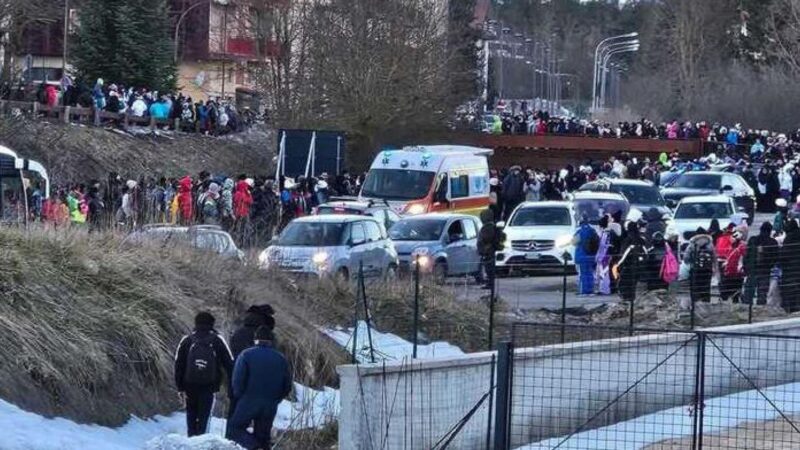The mayor of Roccaraso, a popular ski resort in central Italy, has implemented strict measures to control the overwhelming influx of tourists following a viral TikTok post.
On Sunday, the town saw an unprecedented number of visitors—more than 10,000 people—arriving by 260 buses, many from Naples and the surrounding Campania region. The surge was sparked by influencer Rita De Crescenzo, who shared live videos and photos from the resort with her 1.7 million followers, promoting the town as an affordable destination.
The large crowds severely disrupted the area, blocking roads leading to the resort and overcrowding its ski slopes. The streets were left littered with rubbish, frustrating residents and local businesses. The influx was facilitated by travel agencies offering low-cost bus trips, some as cheap as €20-€30, including breakfast, for the two-hour journey from Naples.
Francesco Di Donato, the mayor of Roccaraso, described the situation as “unmanageable” and has now capped the number of tourist buses entering the town on weekends to 100, with companies required to pre-book online.
While Roccaraso typically sees around 20,000 skiers and 15,000 non-skiing visitors on weekends, the sudden surge of 10,000 to 12,000 extra visitors was described as an “assault” on the town’s infrastructure. Di Donato emphasized that the resort could not accommodate such a massive increase in people, highlighting the risks posed to safety and cleanliness. He also denied accusations of discrimination against Neapolitans, explaining that the town welcomed more tourists but needed to manage numbers responsibly.
De Crescenzo, however, defended her role in the influx, stating, “All I said was that Roccaraso is a beautiful place… people are free to move as they want, and I cannot be responsible for the behaviour of others.” She further stated that she would return to the resort on Sunday, likely bringing even more visitors due to the popularity of her videos.
The incident has sparked wider debate about the role of social media influencers in driving overtourism, particularly in lesser-known destinations like Roccaraso, which was not prepared for such large crowds.




